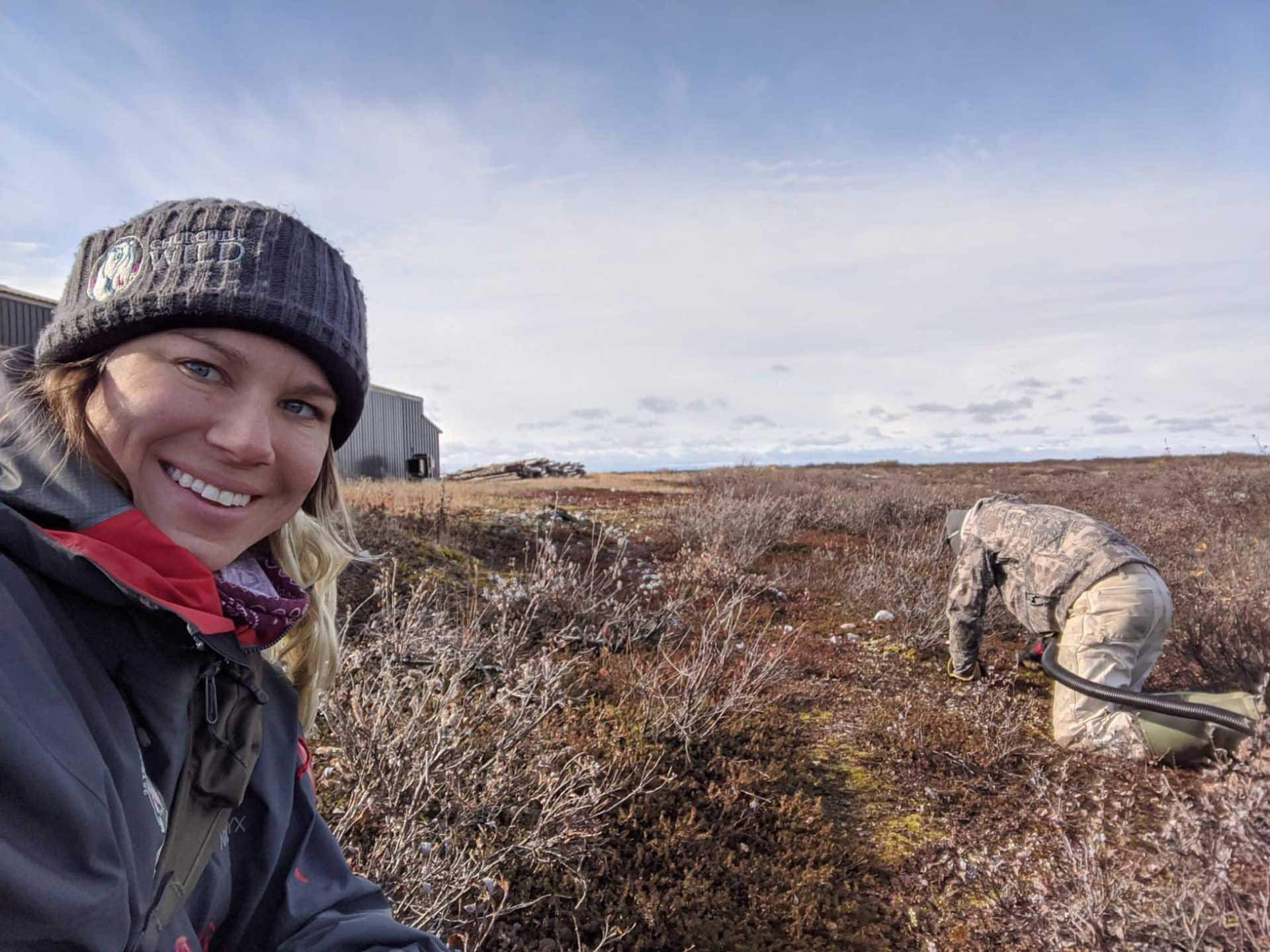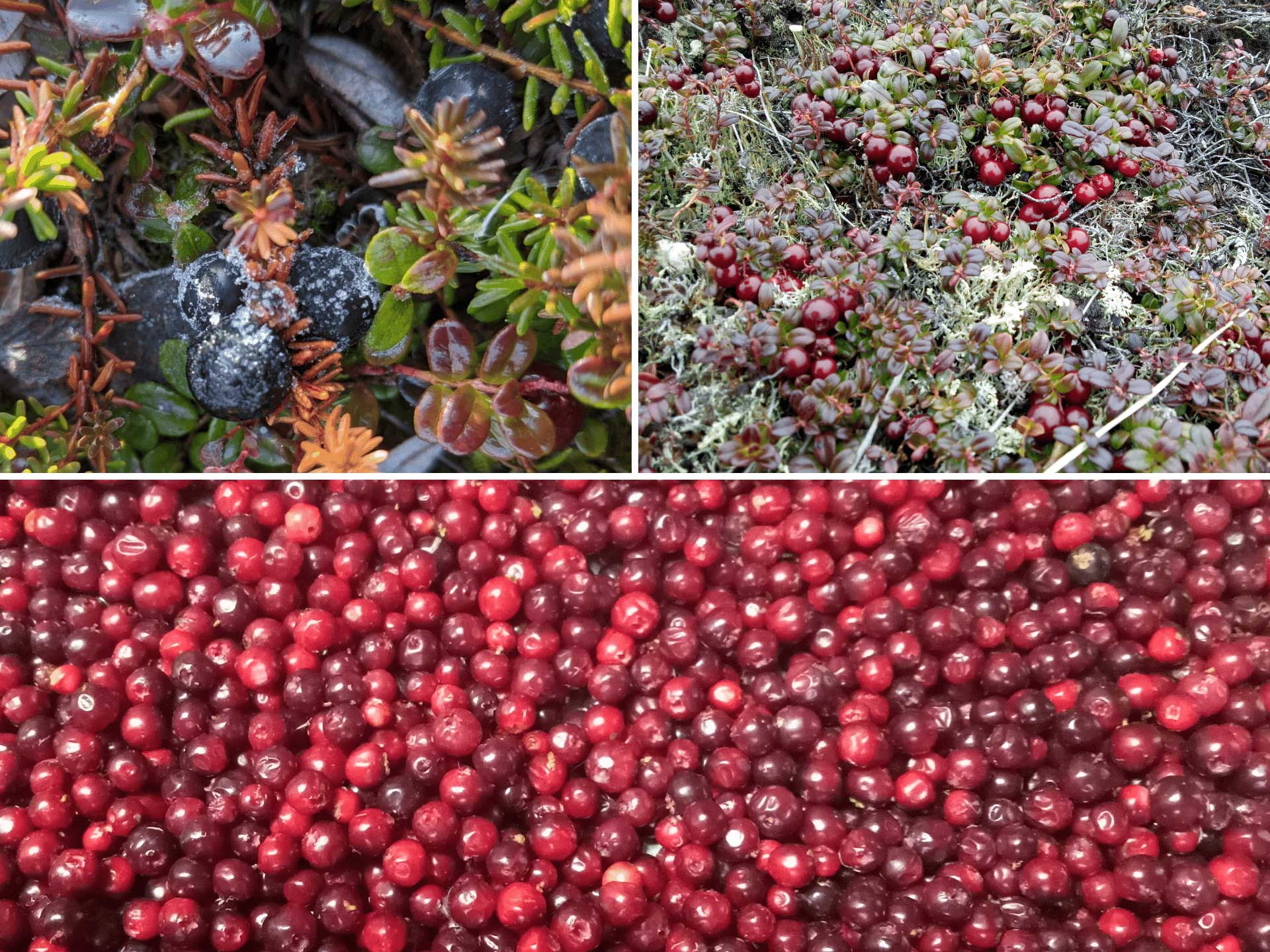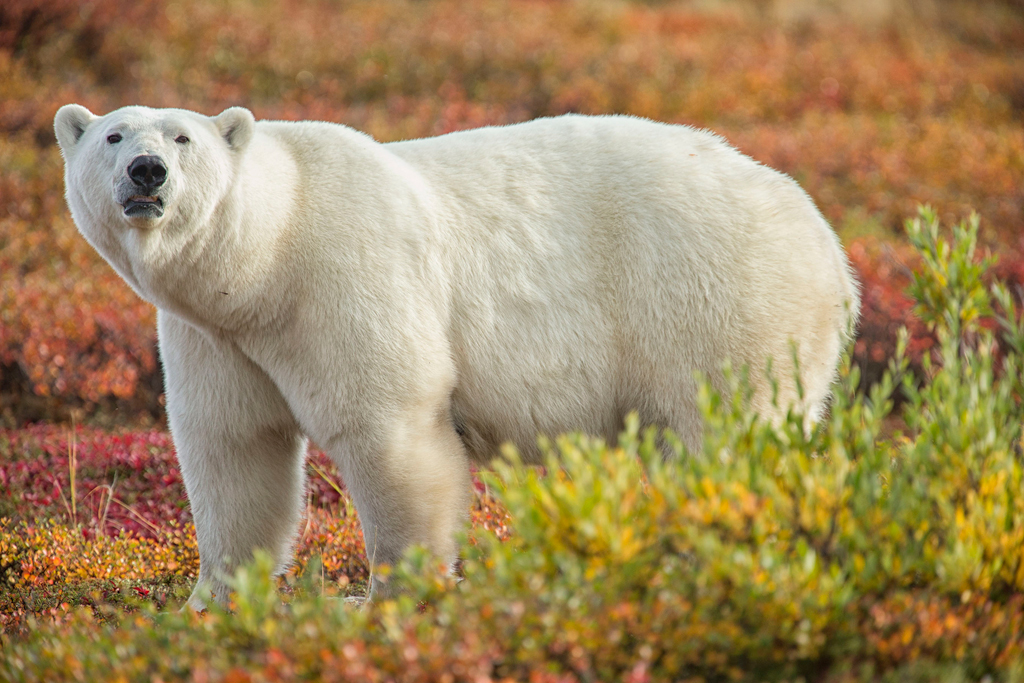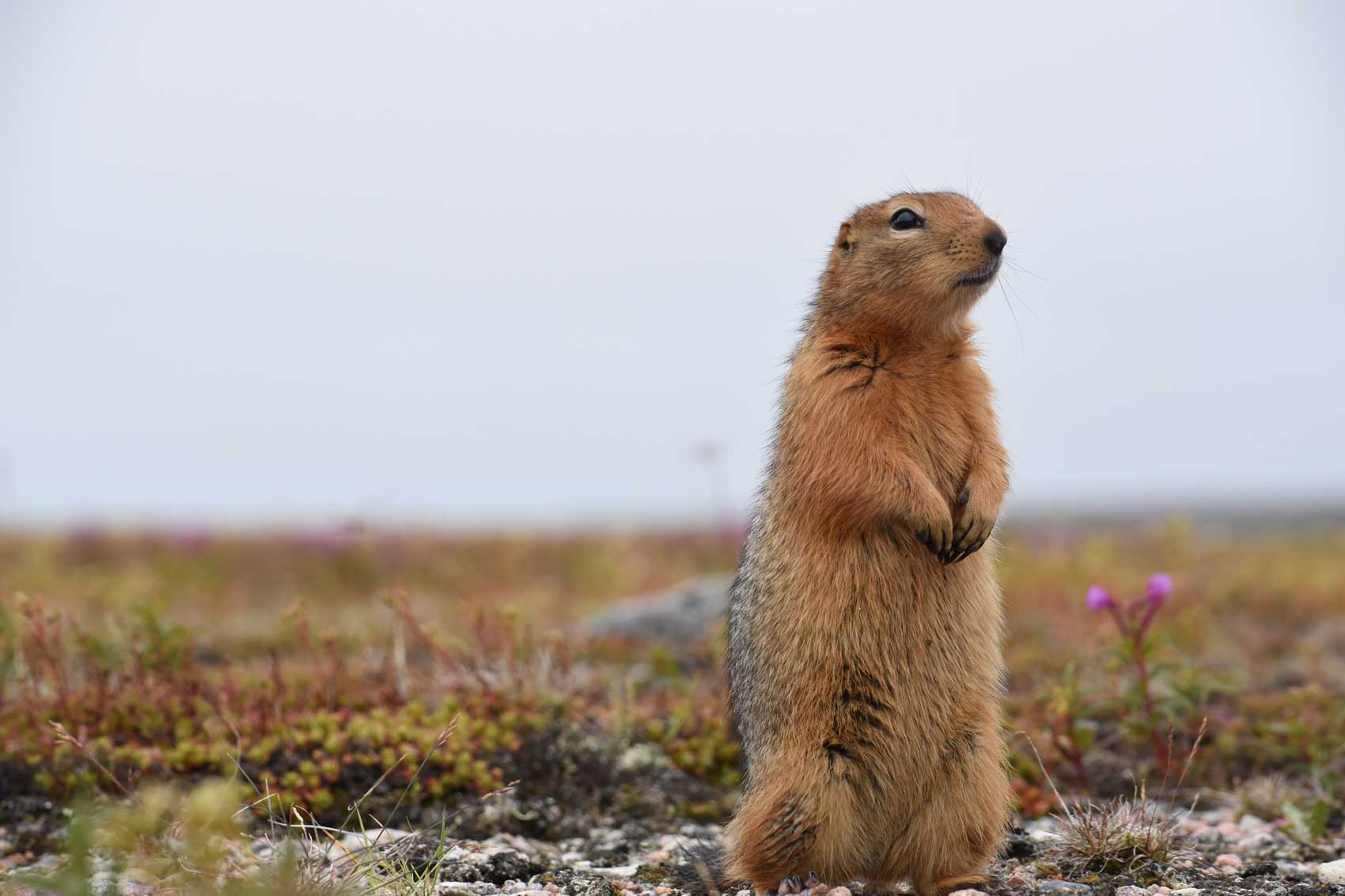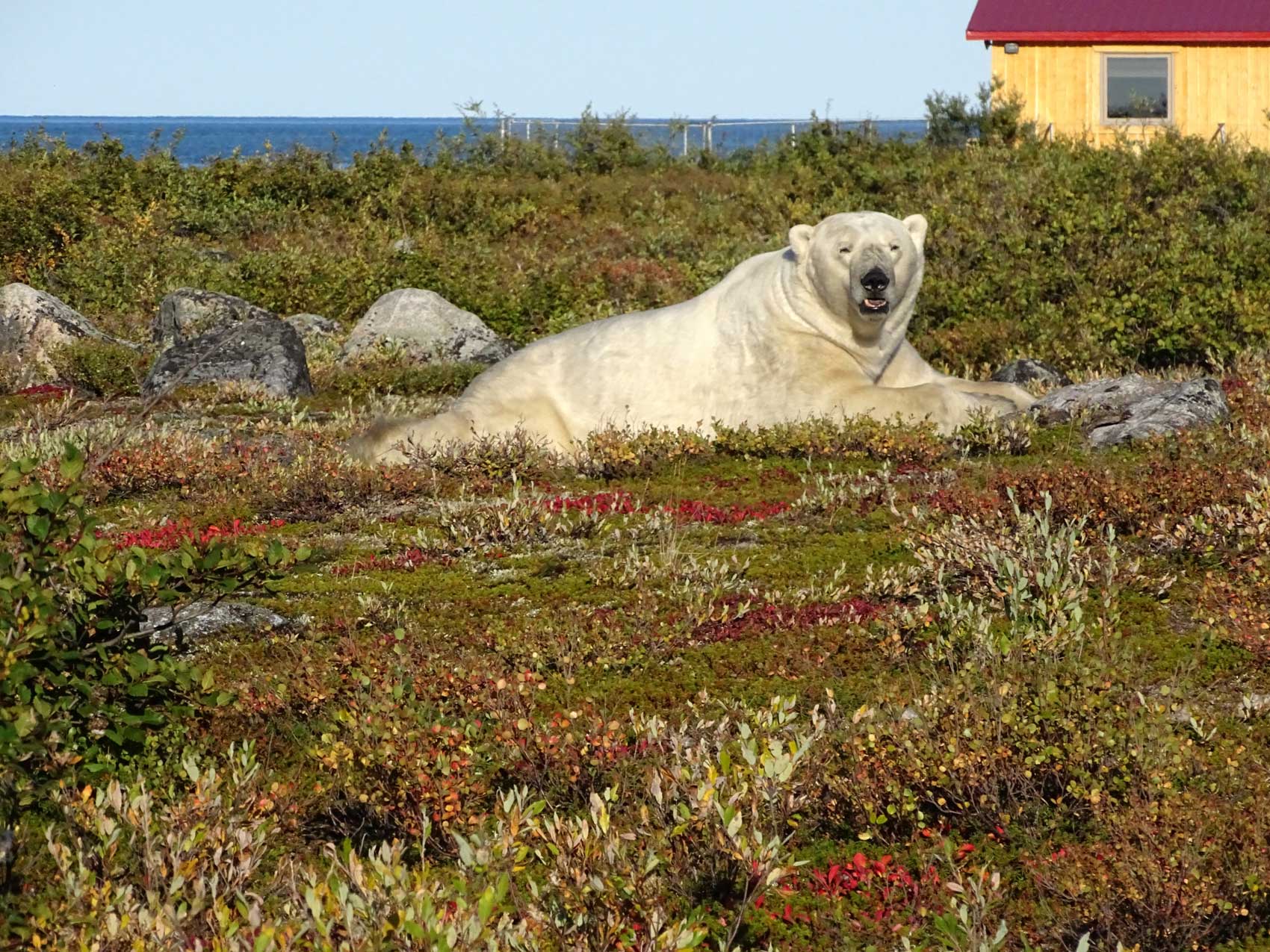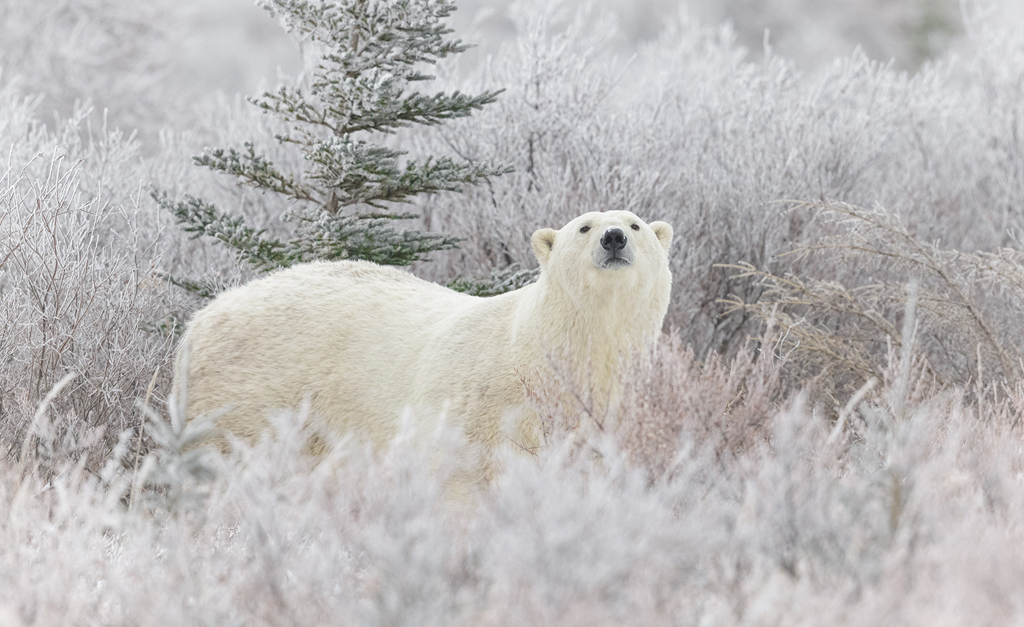by Nicole Spinks, Churchill Wild Lodge Manager
The intoxicating smell of fall envelops me as I step out of Seal River Heritage Lodge.
The leaves are turning colour and starting to fall. The summer greenery is morphing into a bouquet of reds, oranges, and yellows. It’s one of my favourite times of the year. Not only are the colours amazing, the tundra smells of a deep richness from the fallen leaves, the peat, and the piney Labrador tea.
That signature smell also means that it’s berry harvesting time! Blueberries, lingonberries, gooseberries and blackcurrants are the focus during this bountiful season.
Berry picking is not everyone’s favourite job, but I love it. Being outside surrounded by the beauty of the tundra brings a sense of calm, a break from screens, world news, and those negative thoughts that threaten to take over — especially right now. It’s a chance to meditate, in what I like to call, one’s “nothing box.”
The quiet stillness puts me in a peaceful trance, but as my berry buckets start to fill up, the excitement for what these little gems could turn into snaps me back to reality. Cakes, tarts and other sweet treats, sauces, jams, and jellies, and the list goes on.
Harvesting berries in polar bear country requires a bit of extra gear. Along with buckets and warm, windproof clothing, you better make sure that you have your bear guard gear at the ready as well. No matter how far from the lodge you stroll, you must be on a constant lookout for those curious white bears.
While collecting lingonberries at Seal River, I compare myself to a sik-sik (Arctic ground squirrel). They enjoy perching on rocks — the higher the better — for the best vantage point to check their surroundings. When they’re on the move they stop often, lifting their heads to look around. That’s exactly how I move through the berry patches.
I do it primarily for safety reasons, but also because you just never know what you might see! An Arctic hare running by, geese flocking overhead, or a mom and two cubs wandering around the flats. (I digress, back to the berry collecting!)
Cloudberries in a lightly burnt orange colour flourish around Seal River Heritage Lodge. They sit proudly upright, like an upside-down raspberry, just begging to be harvested and turned into our signature jelly.
Dymond Lake Ecolodge is another berry pickers paradise, rich with blackcurrants, lingonberries, and blueberries so close to the lodge you hardly know where to start.
Gooseberries and blackcurrants grow on remarkably similar bushes. The main difference is that the blackcurrant bushes won’t fight you for its berries. The thorns on the gooseberry bushes almost deter even the most eager berry picker. The best advice I can give you is to wear two pairs of gloves, and even then, the thorns sometimes win.
Blackcurrants are a deep purple and gooseberries are typically a dark ruby red, although some of the gooseberries I harvested from Nanuk Polar Bear Lodge are closer in colour to the purple of a blackcurrant.
Blueberries are some of the hardest to collect. They live on low-lying bushes growing slightly under the foliage. It takes patience and nimble fingers to get these berries into your bucket.
Once the first frost hits, the lingonberry harvest really ramps up at Seal River Heritage Lodge. That cold snap plumps up the berries and gives more sweetness to the usually tart berries. At this time, most of the leaves have fallen, giving a bit of a bare look to the willows, but the sparkle of the frost on the berries is gorgeous.
After gathering as many berries as possible, they are brought inside and sorted. No matter how careful you are when collecting, bits of tundra always get into the bucket. After sorting is complete, they’re washed and put into 12-cup bags, then frozen to ensure the highest quality for future use.
There’s always a sense of accomplishment that comes with the last berry harvest of the year, the stacks of berry bags piled into the freezer, waiting to make their way into culinary delights next season.
In the coming weeks the shrubs and bushes we’ve picked clean (with a bit of help from the bears!) will be blanketed in white. We’ll settle into colder temperatures and watch winter move in, as the polar bears gather along the shores of Hudson Bay in anticipation of freeze-up.
Their hunting grounds will soon be ready.

